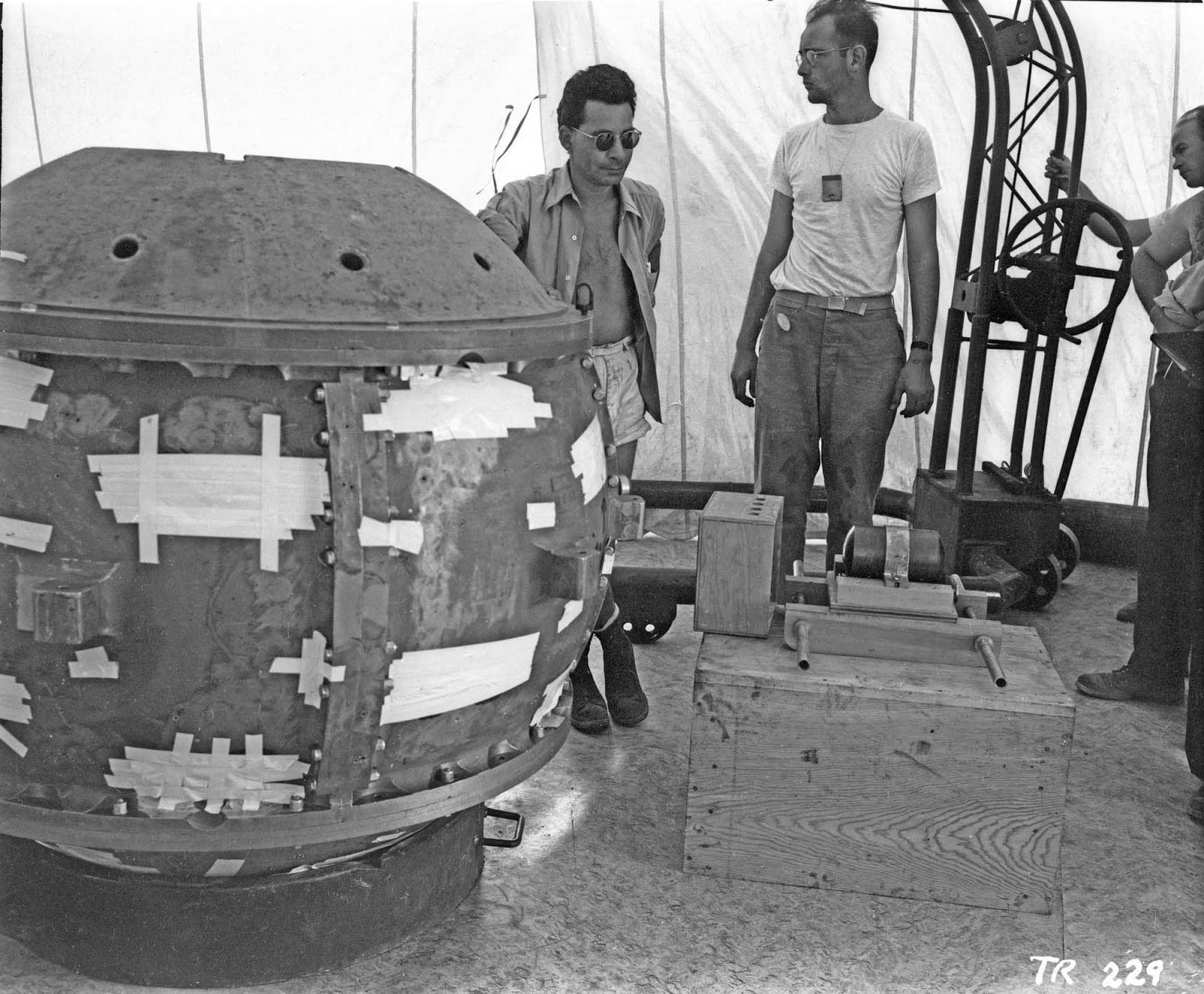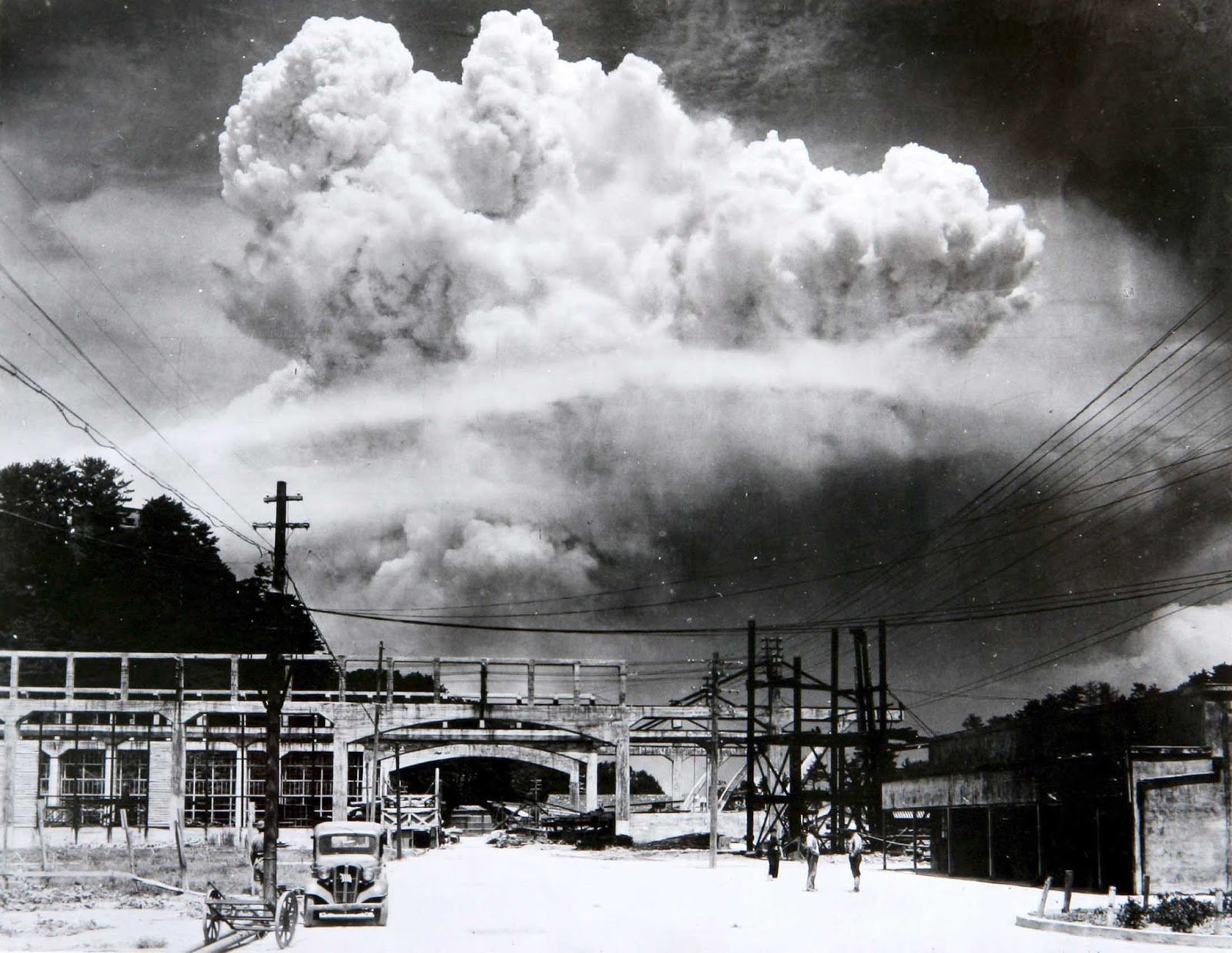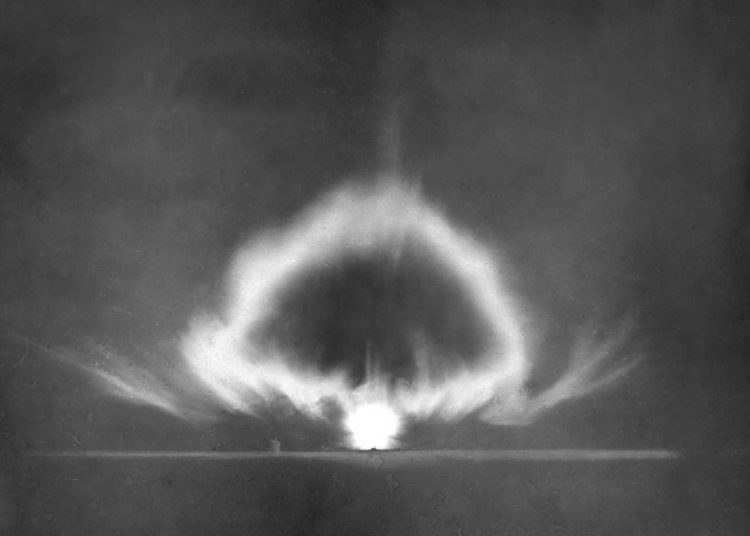I thought we would start
a chain reaction that would destroy the whole world…
that’s what we did.
J.R. Oppenheimer,
In dialogue with Einstein
The creation of the atomic bomb is a complex and decisive chapter in contemporary history, whose protagonists were scientists, politicians and the military. The project was directed by U.S. physicist Julius Robert Oppenheimer, whose life and work has been reflected in books, articles, and documentaries and, most recently in Christopher Nolan’s film Oppenheimer, based on The American Prometheus, Kai Bird’s and Martin J. Sherwin’s book that earned them, among others, the Pulitzer Prize in 2006.
To better understand the historical process in which this happens, it is necessary to know something about the science involved.
At the end of the 19th century and the beginning of the 20th century, unexpected phenomena were discovered and new theories were enunciated to explain matter and the universe. This is how radioactivity, the theory of relativity, quantum mechanics and, with them, a new conception of energy and space-time enter the world scene.
Einstein shows that the speed of light is an unreachable barrier, at a higher speed time dilates and space contracts; it is discovered that when matter disintegrates its mass is transformed into energy.
Throughout the century society is electrified, industrialized at a dizzying pace. Knowledge of science is the soul of development; technology, the way to achieve it; while capital and the search for resources are the forces to dominate the world, a world, moreover, at war.
During World War II, in which two great sides faced each other, the Allied Troops and the Axis Countries, the new science and technology also became weapons. Scientists and engineers are active soldiers, their knowledge and skills are made available to the political and military tendencies of their countries.
One of the crucial elements of the time is the discovery of the release of nuclear energy when matter disintegrates and emits particles and radiation. Physicists seek the transformation of mass into energy (as Einstein had shown with the well-known expression E=mc2) and with it the suspicion of the possible creation of an atomic bomb, with a colossal power never seen before. It was a possibility, then not developed, but it would give a notable advantage to whoever obtained it.
The key that allows the release and use of this energy is given by two physical phenomena: the fission or rupture of heavy atoms and the fusion by the union of light nuclei; and two processes: the chain reaction, when the emitted particles and radiation give rise to new similar reactions, and obtaining the critical mass, the amount of matter necessary so that the chain reaction does not stop and immense quantities of energy can be released. It only remained to create the technology to produce them.

The scientists and politicians involved in this chapter of history were people with great contradictions. When making certain decisions, interests and fears fought against the use of an unknown force in its consequences and the possibility of dominating the world with a new weapon, considered the ultimate weapon.
- Robert Oppenheimer, known as Oppie, was a highly educated scientist with a great facility for languages, a promoter of Theoretical Physics studies in the United States and selected to lead the Manhattan Project for the creation of the first atomicbomb. Knowledge of his actions, the consequences they had, and the way in which he was later treated are fundamental to understanding the time.
There are milestones in this historical process, reflected in both the book and the film, Oppenheimer’s professional training, the Manhattan Project for the creation of the bomb, the maneuvers to discredit him and the recovery of his moral and scientific prestige.
The creation of the bomb
Four bombs were created during the Manhattan Project: Gadget, Thin Man, Little Boy and Fat Man (these last two were launched against civilians in Japan). Little Boy used enriched uranium in a so-called cannon-type design; for its part, Fat Man was based on plutonium and an implosion process.
The successful detonation of Gadget in New Mexico, USA, on July 16, 1945 in what was an experimental explosion called Trinity, made it possible to study the radius of action of the effects on people and buildings, as well as collateral processes, and how to check if the fire in the planet’s atmosphere did not take place, as some suspected.

The brutal explosions over the Japanese cities of Hiroshima and Nagasaki (August 6 and 9 respectively), were political actions rather than military actions; also with an air of revenge for the attack on Pearl Harbor and to show, at the end of the war, who had the greatest power. It was first and foremost a display of advances in technology and military strength, coupled with the fact that the United States was the country that had suffered the least during the war.
The bombings also had another effect: they caused Oppenheimer great remorse and regret, more than because of the bombing, which he considered a necessary war action, but because of the dangerous future it implied.
Later, faced with the scientist’s feeling of guilt, Truman told him: I dropped the bomb, not you.
Thus, Truman pushed the figure of Oppenheimer to the background, as if any other team of scientists had done the same. The character — Truman lets it be understood — is me. The politician who owns the power who decides the future.

It is worth noting the case of the 1954 Gray committee where Oppenheimer is prosecuted, so to speak, at the behest of Lewis Strauss to denigrate him, where they manage to revoke his security credentials and question his loyalty to the United States. They used, among other arguments, that from his position as chief advisor to the United States Atomic Energy Commission, which he held after the war, he expressed his opposition to the development of the hydrogen bomb to avoid an arms race within the growing tension of the Cold War with the Soviet Union. It was a farce of a process that had a negative outcome for the scientist.
However, the military and security authorities associated with the Manhattan Project and some of the scientists cited by the committee testified in favor of Oppenheimer.
In Nolan’s film, the dialogues, treated as theatrical when presenting this episode, were common in the development of the process, Sherwin and Bird say. The transcripts of the hearing became publicly known and were taken to various plays in England and France in the 1960s.
The scientist did not stop serving his country, even though he disagreed and was harassed by people with a lot of power in the government. He was attacked by the more radical tendencies of the Republicans. Perhaps he did not defend himself as he should have and acted in some cases with great ingenuity.
In 1960, with the arrival of a Democratic administration in the White House, Oppenheimer received a political restoration as a national figure, and in 1963 he was awarded the Enrico Fermi prize proposed by President Kennedy himself.
Oppenheimer always expressed his opinion that nuclear knowledge and its implications should be known by all countries, that dialogue should be opened to control nuclear weapons, and thus avoid the total destruction of life on the planet.
When asked in 1965 if President Johnson should open that dialogue, Oppenheimer replied that the proposal was twenty years late, since it should have been made the day after the Gadget bomb explosion in New Mexico.
During the events of his informal impeachment and still today long after his death in 1967, many Republicans continue to view Oppenheimer as someone who embodied a threat and affront to the security of the United States.
The elimination of fascism was the justification for creating nuclear warfare technology. However, in the later development of U.S. military and aeronautical projects, some were carried out by Nazi scientists who had worked on the weapons of the Third Reich.
Meanwhile, a scientist like Oppenheimer, faithful to his country, was relegated to the background, charged with suspicion and excluded from his access credentials to the same laboratories that he previously directed, for confronting problems of conscience and under the accusation of being a communist.
I enjoyed reading the book, and recommend it since it is entertaining, detailed, and thorough. As for the film, I believe that despite being extremely long, it highlights several historical moments in Oppenheimer’s life, which Nolan differentiates with variations in color and lighting, but not with dates, which the viewer must know beforehand or afterward. because they are supposedly known historical facts. The scenes are coherent at times, but the unexpected flashbacks that lead to different times are confusing when following details of the plot. It is also difficult to follow the identity of scientists and politicians and other people, there are no clear references to dates or characters who are sometimes called by first name and other times by last name or position. Nor is the way of presenting science rigorous, which could have been done with more care without the need to present a dense scientific treatise.
For connoisseurs, the film is full of historical nods, such as when Oppie tells Kitty to pick up the sheets, the phrases in the dialogues with Einstein, or when Richard Feynman plays the conga drum at an evening among scientists. Almost all the characters are very well-defined in their role, but they are not always well-identified.
Although I liked the film in general and it is a film that is appreciated due to the nuclear risk we are experiencing, I think the scene of the atomic explosion is disappointing, it had to have a great effect on those who witnessed it, and, although we have seen documentaries with similar explosions when played slowly like the special effects of some films, it subtracts from the shock of witnessing the power of an explosion never seen before, which reminded Oppenheimer of the words of the Bhagavad Gita: “Now I have become the death, the destroyer of worlds.”










